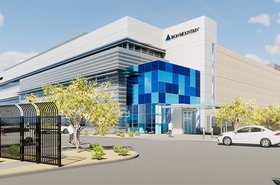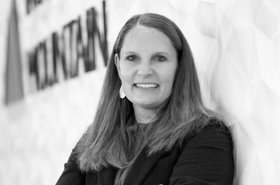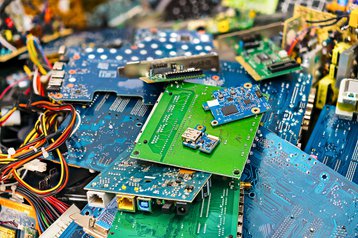Despite often being mislabelled as some sort of power-hungry behemoth, the data center industry has made some staggering sustainability strides over the last ten years.
In the not so distant past, key performance indicators were limited to the likes of uptime, physical security and the temperature inside a facility. While those metrics still exist, today the industry is armed with a far more robust and holistic set of KPI’s.
Now, we’re measuring power usage effectiveness (PUE), water usage effectiveness (WUE), and carbon usage effectiveness (CUE) among others, as well as tracking the percentage of renewable power being used in order to make tangible environmental, social and governance (ESG) progress.
The data center industry consumes around 1.5 percent of the world’s electricity. Although it is because of this large energy consumption that the industry recognizes the value of securing sustainable energy solutions. But is an ethical obligation driving this sustainable shift?
“I think more and more so, data center operators are recognizing it as an opportunity more than an obligation,” says Chris Pennington, director of energy and sustainability at Iron Mountain Data Centers.
“Back in the day, companies had to choose, ‘are we going to do sustainable solutions for our customers or are we going to focus on profit?’”
But that phase didn’t last long. Businesses quickly realized, across all sectors, that sustainable solutions, i.e solutions that have less waste, a lower impact and provide more value, are actually more profitable, better for customers and better for business.
“Consistently we see that when companies focus on looking at their environmental footprint, and think about how to make it better, they quickly see the business opportunities that improve not only their footprint, but their bottom line.
“It’s clear that creating pathways to long term generation from clean energy sources that are decoupled from fossil-based fuels is simply good for business, in addition to being good for the planet,” says Pennington.
What is clean energy?
Like many environmental buzz phrases, the term clean energy comes with its fair share of nuance. So, we felt it only right to ask, what does clean energy mean to Iron Mountain Data Centers?
“Fundamentally, our goal here is focused on decarbonization,” explains Pennington. “Meaning we will seek to support new clean energy generation coming onto the grid that's carbon free. We focus specifically on wind, solar, and low impact hydro. So those to us are the generation sources that we're seeking to bring more of onto the grid.”
Recognizing early on that this is the kind of clean energy its clients want, Iron Mountain Data Centers has been purchasing renewable energy to match 100 percent of it’s annual usage since 2017. Offering a portfolio of 18 data centers across three continents, for over 70 years Iron Mountain’s mission has remained unchanged: to secure what matters most to its customers, with a public commitment to do so in a sustainable and socially responsible way.
Conventionally, ‘100 percent renewable’ has meant that the total volume of energy consumed on an annual basis is matched by an equal volume of clean energy generation over the same time period. Inspired by a bold move from Google in 2020, Iron Mountain Data Centers has gone one step further.
Going beyond 100 percent renewable
In 2020, Google recognized that there was an opportunity to make an even bigger impact on decarbonizing the grid, and that was to shift that focus from an annual measure to an hourly measure.
“Google were the first to really set this aspirational goal to match every hour of its energy consumption with an hour of locally produced clean energy,” explains Pennington.
In 2021, Iron Mountain was the first global company to mirror Google’s goal: to match every hour of its energy consumption, with an hour of locally matched clean energy, every hour of every day.
“We believe that is the ultimate way that we can help fully decarbonize our energy footprint,’ affirms Pennington.
But clean energy ‘every hour, every day, everywhere’ is quite the undertaking and as an idea initially borne from Google, somewhat intimidating.
“It’s one of those bold goals that at first seems so incredible and so difficult to do that it’s almost shocking. I think we’re getting a lot of attention for just having set this goal, and what we’re seeing is that there’s more people adopting this same goal, or at least strongly considering it.”
And momentum is building. With Microsoft currently touting a very similar goal, to match every hour of its consumption with an hour of clean energy.
“It’s difficult to do, there’s some hurdles to get over along the way, but none of this is impossible,” says Pennington. “We think it’s absolutely the way that all companies should be buying energy in the future.”
The last leg
The final stretch of any journey can often be the hardest, so it’s important to recognize it is possible to make steady progress with existing energy contracts. For Iron Mountain, that’s roughly 80 percent carbon free, every hour of every day, based on current energy contracts across most of its sites.
“Solving that last 10-20 percent is going to get incrementally more difficult and more expensive and that’s going to require investments in new technologies, new storage and new generation types,” says Pennington.
“That's where things get really interesting, that's what we're excited about, identifying those unmatched hours and then finding ways that we can cost effectively solve for those and get that bit closer to 100 percent as fast as we can.”
Luckily for those just starting out on their sustainability journey, an ecosystem of providers is emerging to help companies navigate this space.
Iron Mountain for instance, utilizes information from both its existing retail providers, who make its hourly consumption data readily available, and third-party providers such as Clear Trace, who take that data, marry it with data from contracted wind projects, and ultimately provide a view into when those unmatched hours are.
Knowledge is power, consistency is key
Unfortunately, sustainable due diligence doesn’t end at having a data center chock full of the most efficient equipment, although it helps. You need to be consistently making sure it remains that way.
You can’t manage (or improve upon) what you don’t monitor. Iron Mountain Data Centers has adopted a standard measure for PUE across its portfolio, using The Green Grid level three measurement. This takes the IT load at the output of the UPS systems, and compares it to the full facility load, ensuring a consistent measuring methodology across all its buildings.
Via an ISO 50001 energy management certified programme, Iron Mountain Data Centers also ensures it continuously monitors performance, using this data to set objectives on where and how improvements and/or investments can be made.
“It's less about what your PUE number is compared to somebody else's, and more that you're consistently measuring it, that the measurements are very clear, and that you're tracking how to make improvements over time. And that's really where the benefit is, in the discipline of consistent energy management.
“It all begins with taking the time to understand what your footprint looks like and then start developing the solutions that will ultimately get the most impact for your invested time.”
Sustainability baked in
“In time we’ll have more new facilities that we've built than the older facilities that we've acquired, so new facilities are a critical piece of our sustainability journey,” says Pennington. With this in mind, Iron Mountain Data Centers has committed to ensuring every new colocation facility is BREEAM certified as of 2025.
“We selected BREEAM, as we felt it was the most aggressive in terms of the holistic view of the facility.”
When a company has facilities that become BREEAM certified, it indicates a holistic approach has been taken to designing not only a sustainable facility, but a high performing facility for both energy resources as well as the health and well-being of the people inside the data center.
Reuse and recycle
It’s all well and good ensuring your equipment remains as efficient as possible for the duration of its life within the facility, but what about the lifecycle beyond?
Among the sheer volumes of servers and equipment cycled out by data centers on an annual basis, there is a tremendous amount of IT equipment that has reached ‘end-of-life’ that is nevertheless able to be repurposed, reconfigured, sanitized and redeployed.
“I love the idea of finding the circular solution opportunity that enables hardware to be reused as an upgraded solution to older existing hardware,” says Pennington.
And if a piece of equipment can’t be reused, it must be disposed of correctly. “We’re seeing increasing amounts of really strong recycling channels available, and certainly Iron Mountain provides that service to our clients to make sure that their equipment that comes out of our facility is responsibly disposed of through recycling channels. But the real opportunity is to actually put this equipment back into use and repurpose it versus just recycle it.”
Demonstrating Iron Mountain’s commitment to the responsible disposition of IT equipment,
it has recently joined forces with ITRenew, a leading provider of equipment dismantling, sanitization and recycling, providing Iron Mountain with the opportunity to offer this end-of-life IT asset disposition at scale, as well as cementing the importance and value of the practice.
The business benefit
Ultimately, if clean energy is the cheapest energy out there, everybody should want more of it, every hour of every day. That there is the overriding business case for why we should be adopting and pursuing 24/7 carbon free energy.
“There's a real business benefit,” says Pennington. “It doesn't cost a premium to pursue this. We've adopted this goal and we've had it for close to a year now and we're not paying a premium to have this clean energy 24/7 commitment. We just need companies to get started on the journey.”
More from Iron Mountain
-

Iron Mountain to track carbon usage using ClearTrace
Plans to go carbon free 24x7 using hourly carbon and energy usage reporting
-

Sponsored How to build the best global data center platform
Five key considerations for colocation customers with global needs and big ambitions
-

Iron Mountain to acquire ITRenew for $725 million
Iron Mountain to launch Global IT Asset Lifecycle Management business

